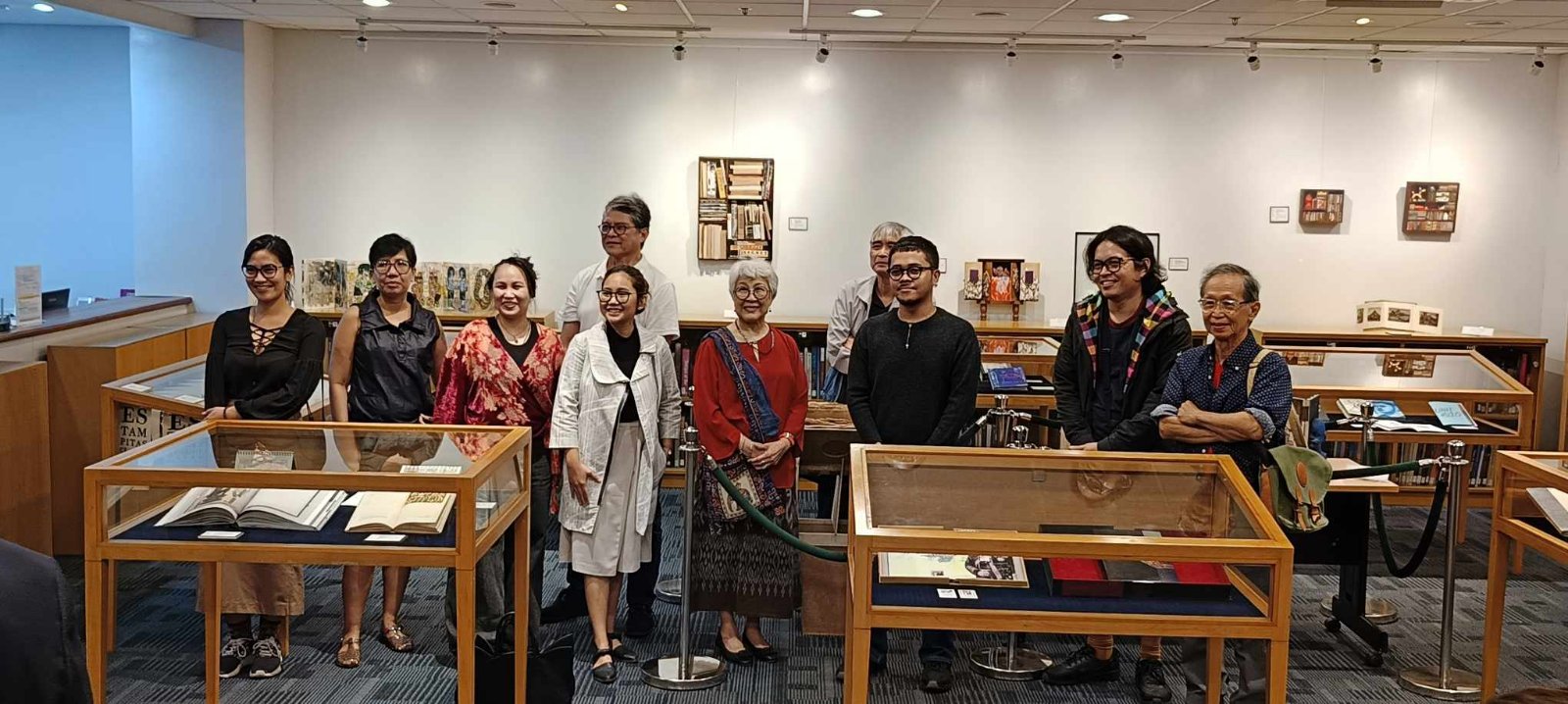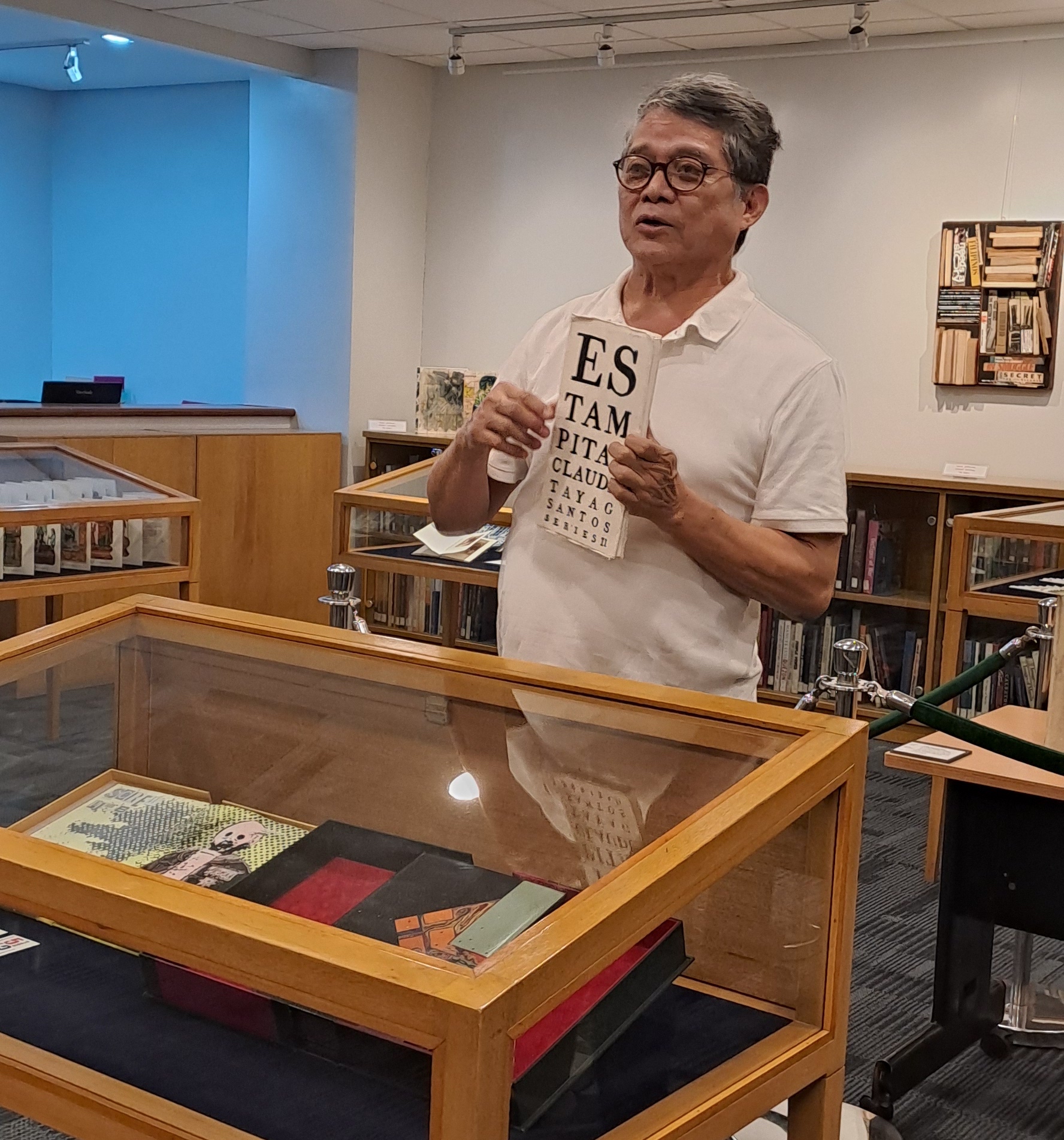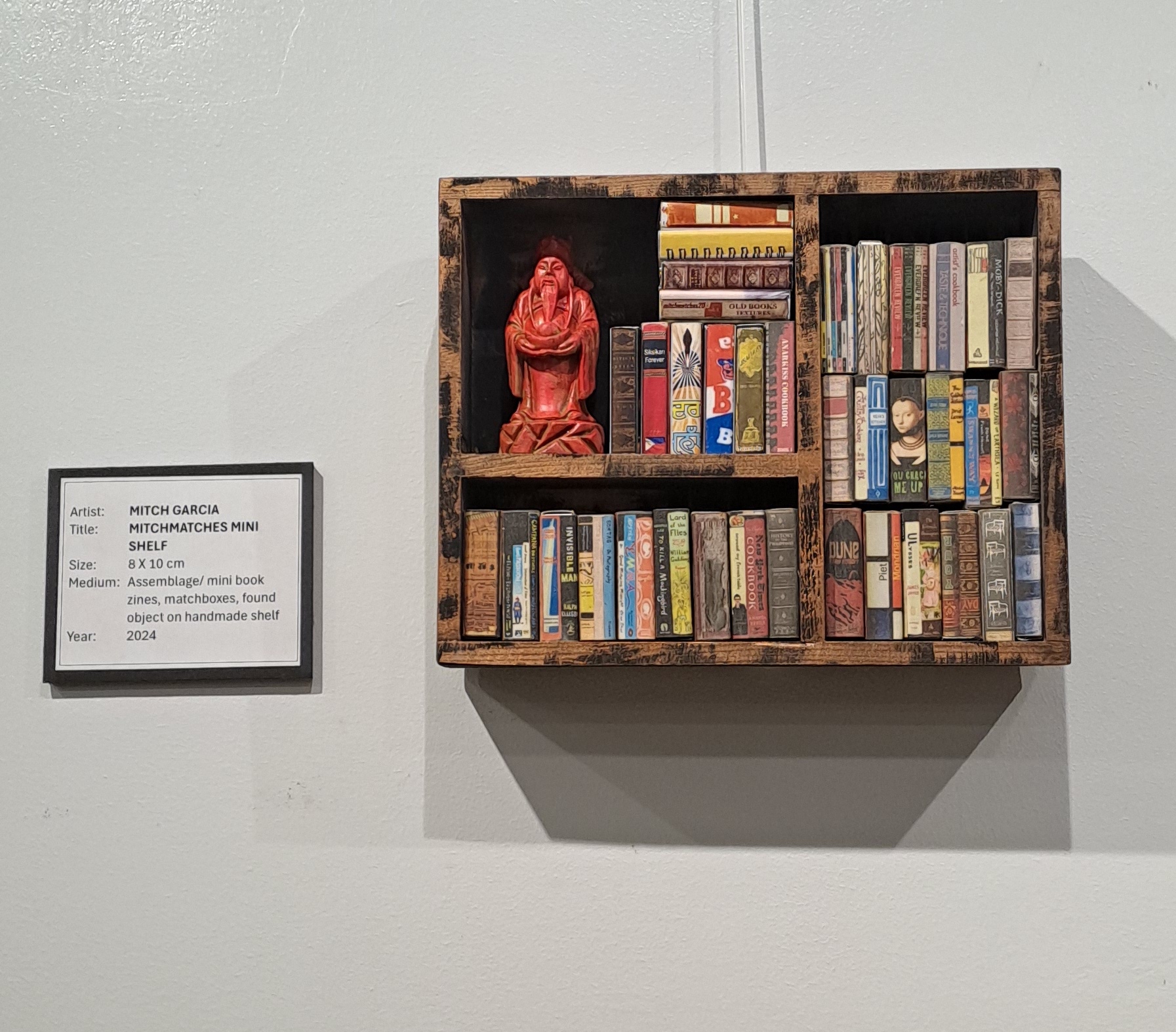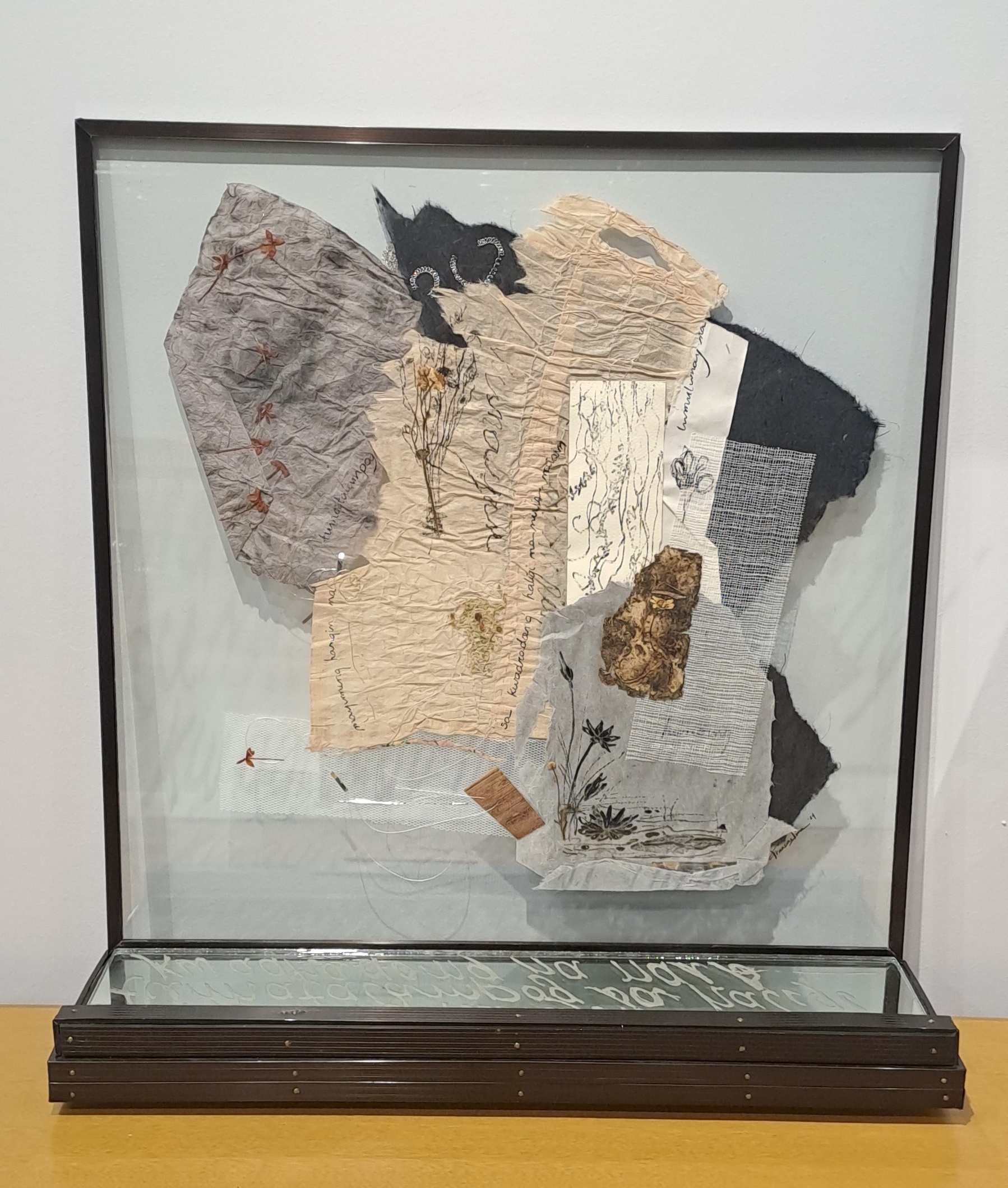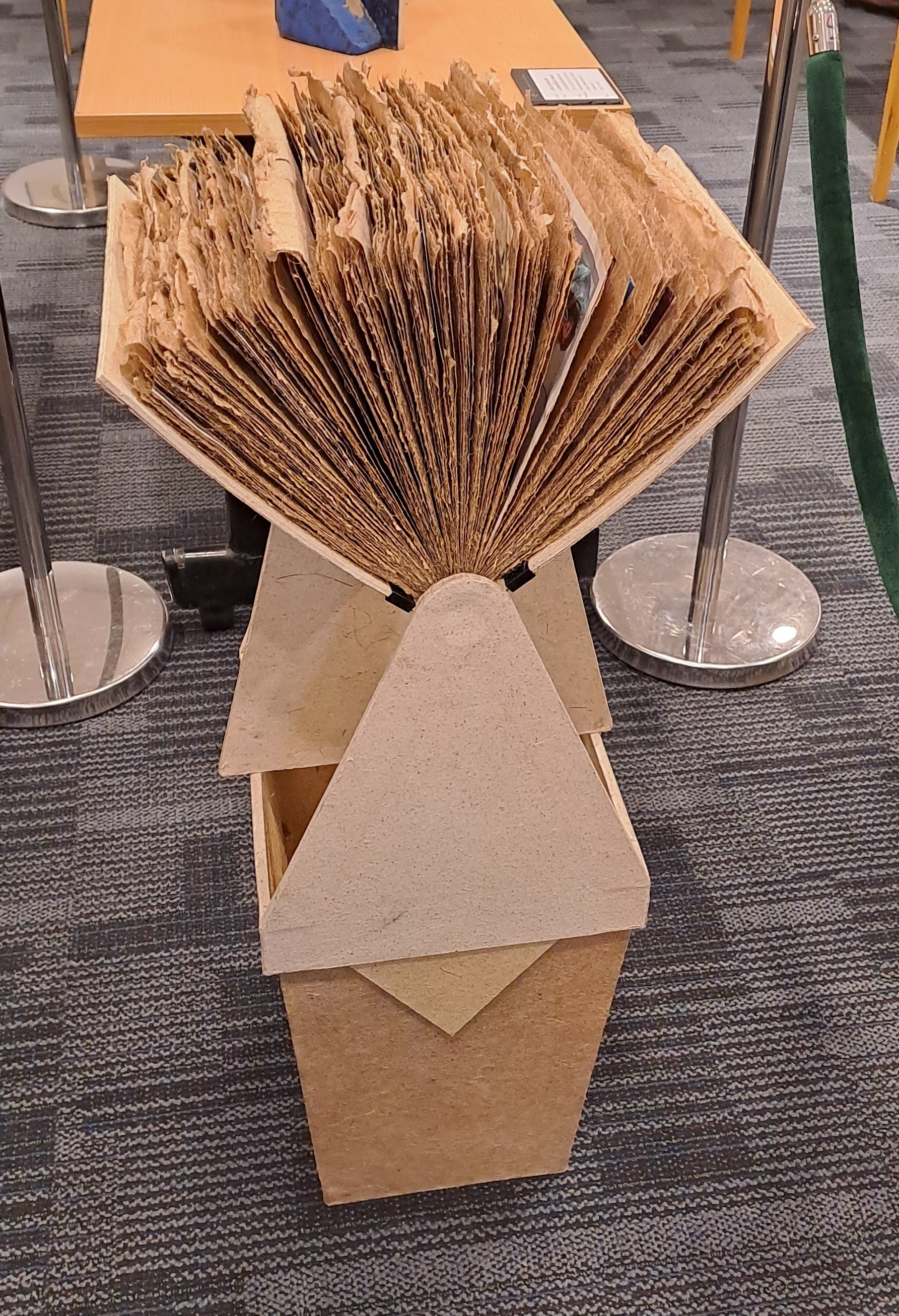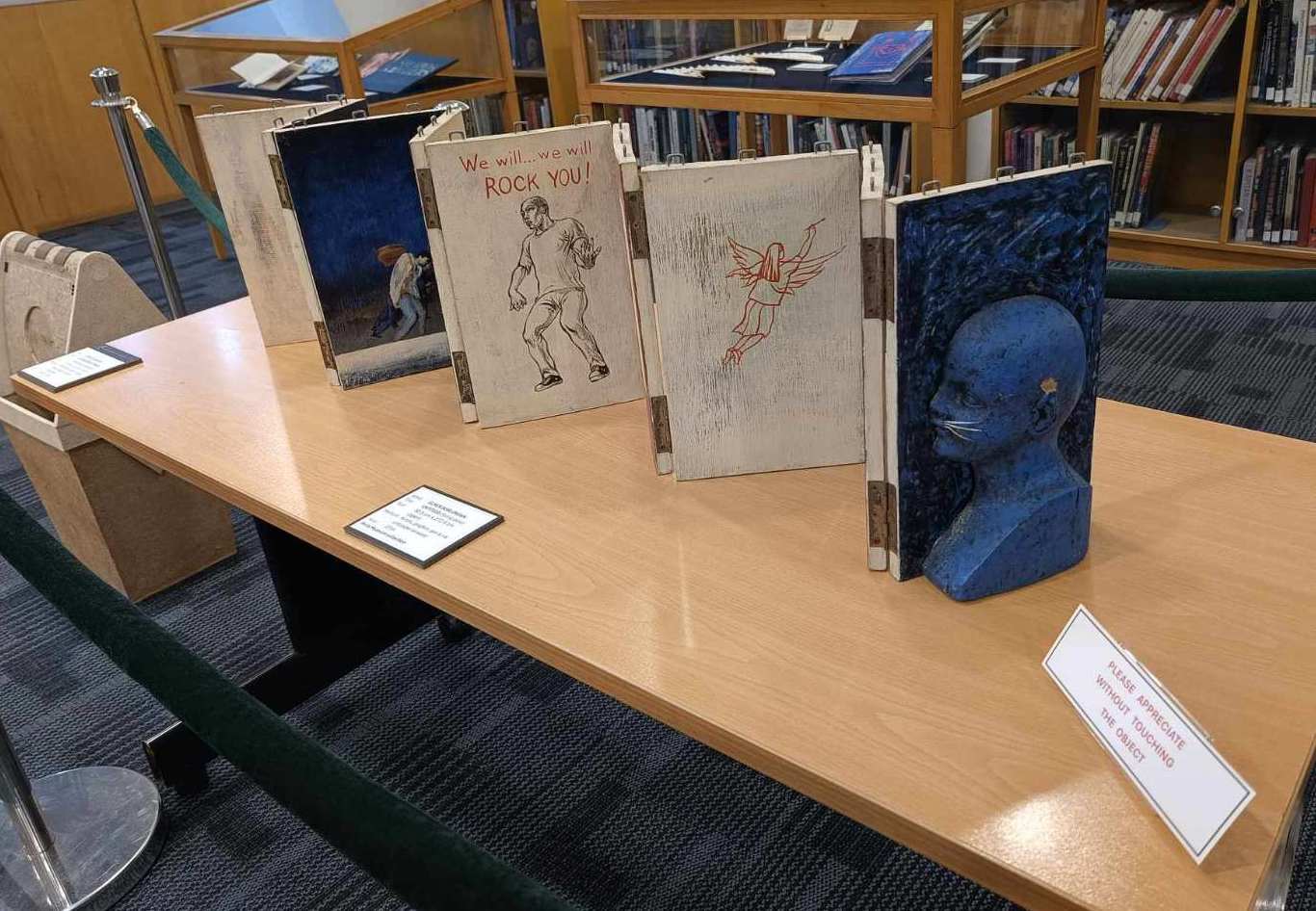The recently concluded Book Art -/+ ArtKlat 2.0 exhibition at the Ortigas Foundation Library (OFL) explored the intersection of book art and related disciplines, presenting the works of a diverse group of artists. The goal was to provide their public with a fresh perspective on books as an art form, highlighting how artists are reinventing the traditional book format in creative and unexpected ways.
Book Art -/+ ArtKlat 2.0 is one of the rare instances where a local archival library shines a light on contemporary book art. It's worth noting that libraries often serve as repositories and collectors of these kinds of works. For instance, the Billy Ireland Cartoon Library & Museum in Ohio, USA, is a leading institution for the study of comics and cartoon art given their vast collection of original cartoons, serials, and comic books among other related archival objects. Meanwhile, Emily Carr University of Art + Design in Vancouver, British Columbia, houses a collection of artist books that showcase a variety of printing and binding techniques.
Claude Tayag presented his ’Estampitas’ series, a collection of digitized watercolor works inspired by traditional wood-carved santos. Using archival printing on Hahnemuhle paper (with the help of photographer Neil Oshima), Tayag highlighted how costly this process is. As a result, his editioned book copies will be printed on demand over the next few years. This emphasizes the expense associated with producing book art, particularly when each copy is handcrafted or created using specialized techniques.
In Tayag’s words, his works were "devotional prayer cards that you buy, or people give you." Typically, ‘estampitas’ serve as reference images for ‘santo’ carvers in the olden days, but Tayag reversed this process in his series. "I take inspiration from a carved ‘rebulto’ and turn it into a watercolor painting, which I digitize and turn into an ‘estampita.’" He explained that while the book is digitally printed, it remains handcrafted, featuring hand-folded pages and a cover pulled from a rubbercut plate.
Father-daughter duo Pandy and Diana Aviado took a different approach, incorporating paper wasp nests into their art to emphasize paper's natural origins. Their displayed books were either hollowed out to house parts of the nests or an entire book covered in gold-painted paper wasp nests.
Book artist and papermaker Francine Lima contributed her collage ’Sheets Mended Over Mind/Body,’ which brought together fragments of marked paper typically collected in scrapbooks. Instead of binding them in the traditional book format, Lima suspended them together flat under a frame. Meanwhile, cartoonist Chris Juricich showcased artist books that chronicle his travels through cartoon strips. Similarly, artists like Ginoe and Epjey Pacheco exhibited artist books that functioned as repositories of spontaneous or experimental ideas, housed in hardbound journals.
The exhibition also featured unconventional book art forms such as Hannah Nantes's ‘Anima Sola,’ a constructed cabinet with printed collages, and the author’s ‘Fan ng Pasko,’ a hand-printed zine on a fan. Loreto Apilado, from the Ortigas Foundation Library and a member of the International Association of Hand Papermakers and Paper Artists, presented ‘A Cen(eros)d Trash,’ a trash bin book concealing a scrapbook of erotica magazine cutouts. This piece, last exhibited at Book Art 2002 in Luz Gallery, served as a reminder that while book art isn't new, it continues to evolve in Metro Manila’s art scene.
The exhibition also included works by Aldrin Cyrill C. Acuna, Elmer Borlongan, Santiago Bose, Benedicto "BenCab" Cabrera, Mark Cockram, June Dalisay, Leonida Dumsang, Asao Shimura, Angela Silva, Stephanie Syjuco, and Peter Thomas.
Curatorial Notes
Apilado expressed his excitement about organizing a book art show in over 15 years since the OFL’s last one before they moved offices: "We gathered young, upcoming, and renowned artists here and abroad. Some of them you wouldn’t expect to explore such an obscure art form or have it in their body of work," he noted. His remarks reflect a broader trend in contemporary art, where traditional categories are increasingly blurred.
John Silva, Executive Director of the Ortigas Foundation Library, shared that the exhibition marked one of the library's few book art shows, as they usually focus on historical themes. "We feel that these works of art in book form are an extension of our appreciation of books," Silva said. He also emphasized that when traditional mediums are out of reach, artists often find inventive ways to express themselves, using book-like objects to convey intimate, sometimes poignant narratives. The exhibition created a link between contemporary book art and the library’s collection, demonstrating the ongoing relevance of books as a medium of creative expression.
Though the exhibition featured works that invite curiosity and interaction—as books are meant to be browsed, it feels like a missed opportunity that the books weren’t available for browsing. This decision, however, was made to preserve the integrity of the artworks, ensuring they remain in optimal condition especially that there are works over 20 years old.
At this point, it’s fair to speculate that book art as a form is underappreciated in the Philippines. But as demand or interest grows, particularly within local archives and libraries, this blend of books and contemporary art is just waiting to find its own niche of collectors. By exploring book-like objects, the exhibition encouraged reflection on the evolving relationship between art and books not limited to the printed format.
Book Art -/+ ArtKlat 2.0 ran from September 3 to October 15, 2024 at the Ortigas Foundation Library.

